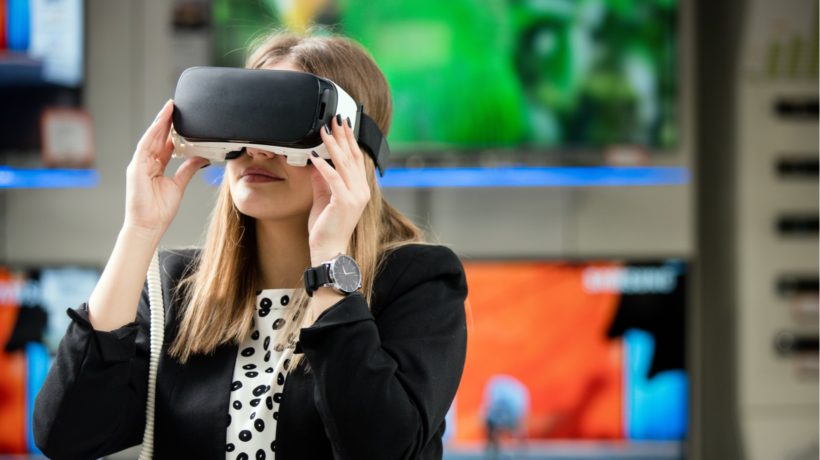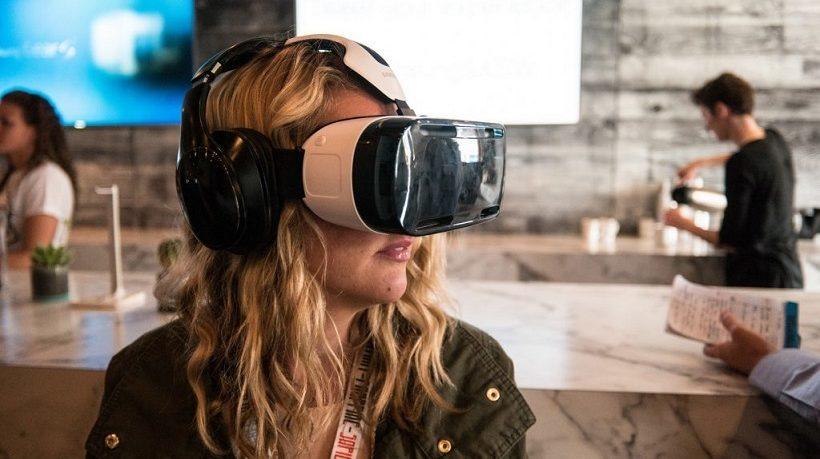2018 VR Headsets Will Impact Classroom Learning
Let's face it, Virtual Reality is really cool, and most educators agree that at one level or another it could be beneficial to student engagement or take us back to the days when field trips were easier and less of a legal hassle.
The reality is that up to this point, the cost of Virtual Reality headsets has been prohibitive for most classrooms. Unless one is purchasing a headset that requires a phone to be dropped into it, the cost for a headset has generally started at a minimum of $300. However, that is not the expensive part. The challenge has been that it also requires a computer with a souped-up graphics card. Most in the VR industry prefer a minimum of the Nvidia 1060, but Windows Mixed Reality will run on computers with chips as low as the Nvidia 960. Because of this, Chromebooks and the vast majority of computers already in schools won't work due to the need for the accelerated graphics card.
Let me pause here. No one should interpret my comments as disparaging the quality of the experience with this graphics card. Frankly, it's amazing. We created an astronomy unit that lets students pilot a spaceship to black holes, the Milky Way, and other locations. The experience is so immersive, jaded adults forget they are in a classroom. The reward for me is watching the sense of wonderment on the faces of students as they pilot their ship to the farthest reaches of the universe.
The challenge is that the cost of these computers—for all practical purposes—means that a school will purchase a handful rather than one for each student. Similar to how most of us got our hands on a computer at school in the '80's, '90's, or '00's, when there was a computer lab and we took turns. This worked well for 30 years and will continue to for high-end Virtual Reality. Even more, public libraries, tutoring companies, and Virtual Reality arcades will adopt this higher level experience. This is a model we believe in and will continue to support due to the rich learning experience it provides students.
However, many schools now start by thinking of a 1:1 experience due to the rapid advance of the Chromebook into classrooms. In 2016 and 2017, this was not a possibility in Virtual Reality. By the time classes begin in the fall of 2018, it will be. That is because Oculus, HTC Vive, Google/Lenovo, and Pico have all released untethered, standalone headsets. For the most part, they will cost less than $500, with the Oculus Go starting at $200. Microsoft, which released its Windows Mixed Reality VR system in the fall of '17 will more than likely be along with their own version sometime in the next 12 months (this is me guessing with no inside knowledge).
With all-in-one VR headsets now available for the price of an expensive meal at a nice restaurant, suddenly the game has changed for the consideration of 1:1 learning. My guess is that you are asking yourself what you give up with the lower cost headset because, of course, nothing in this world is free.
4 Main Differences Between Google Lenovo Headset And More Expensive Systems
Well, for the most part, few people have had their hands on one of these, but I did get to test the Google Lenovo headset at CES (Consumer Electronics Show) in Las Vegas in January of this year. This is what I can tell you: overall, it is a good experience, even considering the comparison to the more expensive systems. I can identify 4 primary differences:
- The less expensive systems use the Qualcomm Snapdragon Chipset, rather than the more robust Nvidia chipset. This is a mobile phone chip and generally speaking, does a good enough job.
- Rather than using what is referred to in the industry as 6DOF (6 degrees of freedom), it has 3DOF (three degrees of freedom). The bottom line is that there is a lesser ability to move around in the virtual space but still, significant movement. This article you can read here explains it better.
- Untethered. Having Virtual Reality without a wire is a significant benefit in the world of VR. With the best VR, which is tethered by a cord to a high-end computer, when you lose yourself in the virtual experience the cord is always there to remind you that there is a real world. Maybe that's good, but universally users look forward to the day when they won't be burdened with a cord.
- Less storage space on the device to hold programs, videos, and information. When the cost is lower, RAM is one of the pieces that is sacrificed. It seems likely that many of these will be able to stream some limited content through a WiFi connection to make up for this. Oculus Go will be offering 2 versions, each with different amounts of RAM. Think of this in terms of your mobile phone. It's always tempting to get the 16mb storage version and save money, but ultimately, you are deleting photos, videos, or apps, to make room for the new stuff. This is the challenge with the less expensive devices.
The reason 2018 will be the year of VR in the classroom is that the lower cost gives schools a gateway into Virtual Reality. Not only that, but the standards-based curriculum is now available as a supplemental learning tool, and companies are working hard to create great learning experiences. It's almost certain that while some schools will outfit their STEM labs with high-end systems, others will outfit a classroom with 1:1 VR learning for about $5,000 for a classroom of 25 students.
What that means is pretty simple: students will learn engineering design while standing on The Great Wall of China, photosynthesis in the Redwood Forests of Northern California and earth formation in Iceland. It means that students will get to take apart the human head and understand why they need to protect theirs with helmets. It means chemistry will finally be fun...yes, I said fun!
In 1980, The Learning Company revolutionized learning with titles like Reader Rabbit at the dawn of the personal computer. We stand at a similar point in time. It's hard to say how fast the adoption rate will be for Virtual Reality headsets, but with this new crop of headsets in 2018, it will certainly be a lot faster than before.









